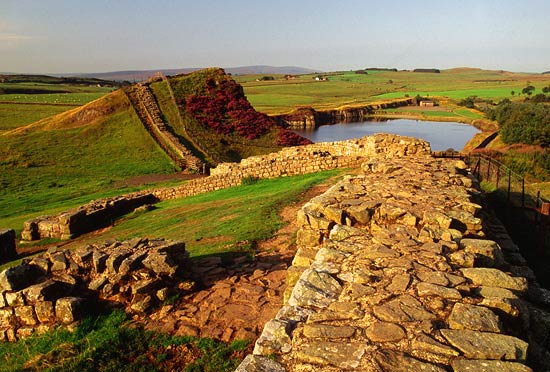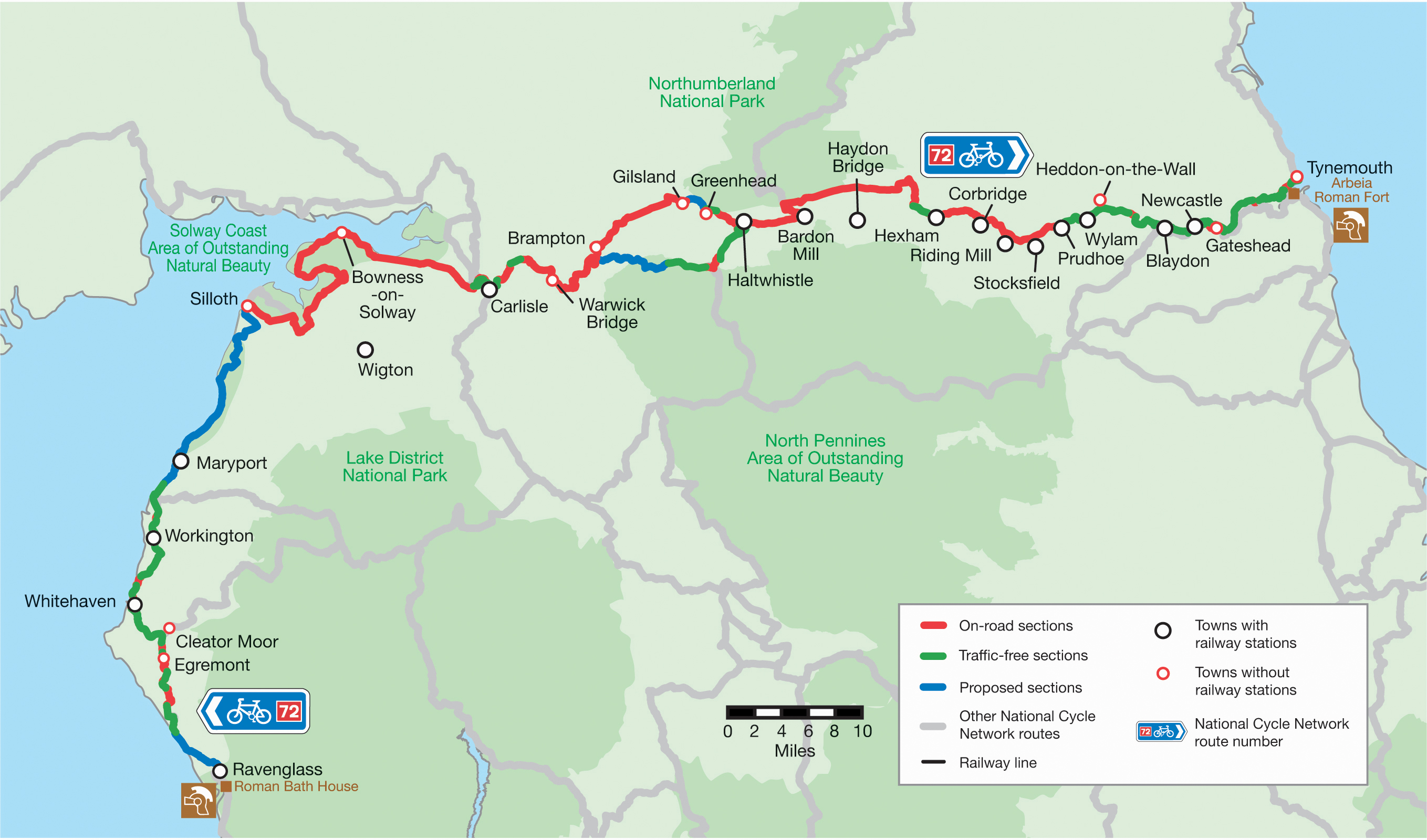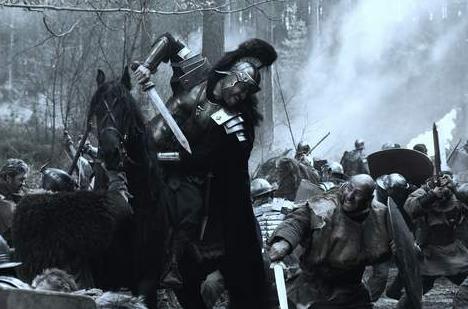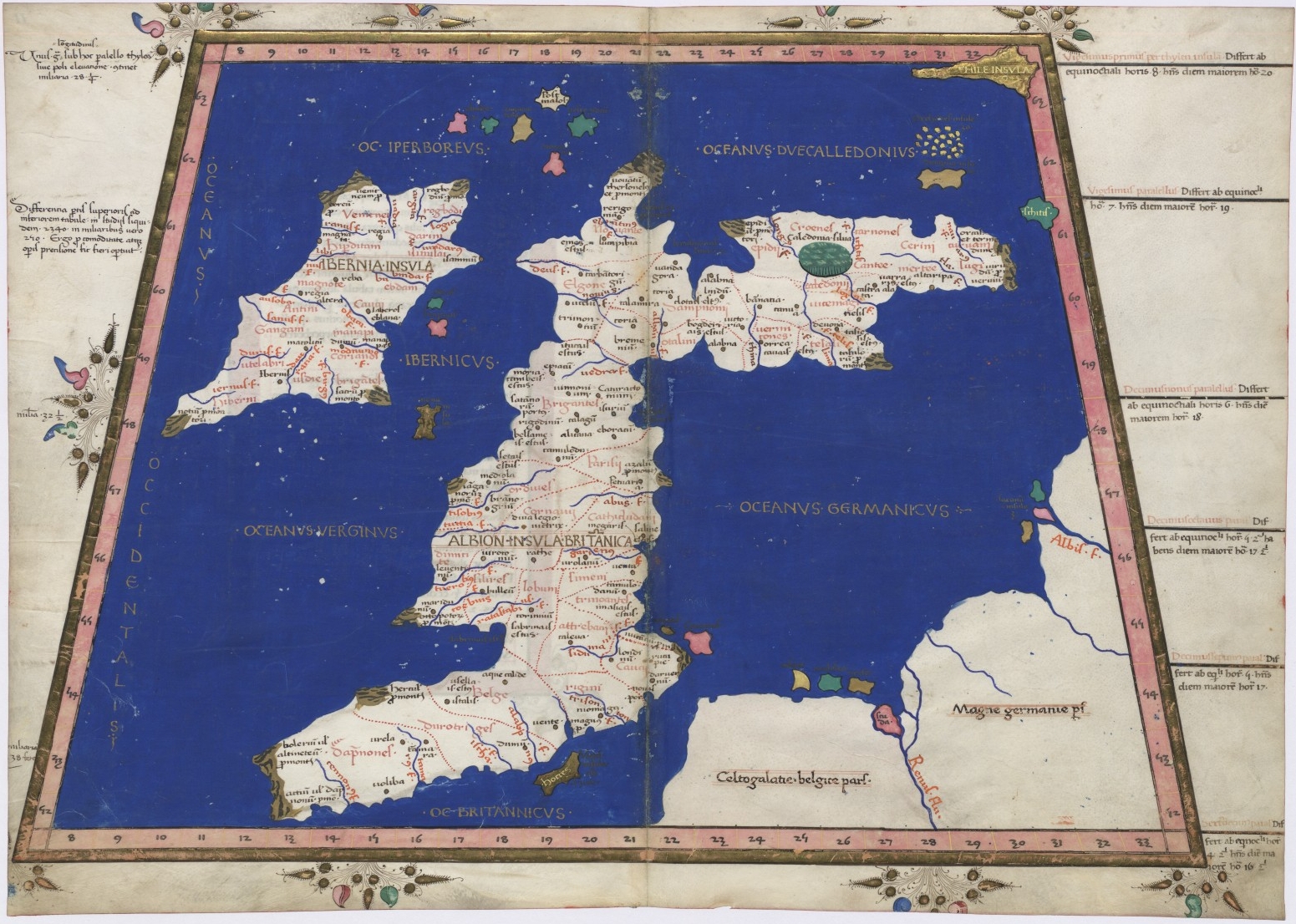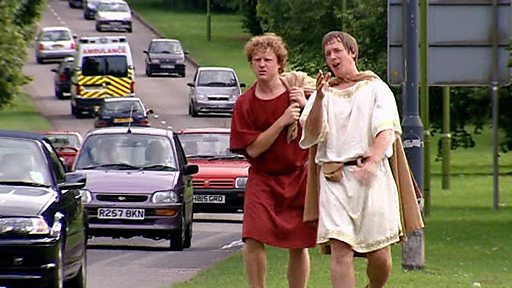The Mystery of Hadrian’s Wall October 6, 2013
Author: Beach Combing | in : Ancient , trackbackHadrian’s Wall is one of the great Roman mysteries: though most archaeologists and classicists that trot obediently along it do not think of ‘the Wall’ in those terms. Consider the facts though. Hadrian builds HW in 122-c.126 as part of his efforts to retrench the Empire after Trajan’s expansionary policy in Dacia and Armenia. Hadrian was not particularly into conquest. But why bother with a barrier here? It arguably took tens of thousands of legionaries four years to build the thing and to what end? If we ignore all the nonsense about HW being a customs barrier (ha!!!) or an attempt on the Romans to be seen from the upper atmosphere (OK we made that one up) then it is clear: the Wall was to keep the British Celts and the Picts to the north of them the hell out of Britannia. But weren’t there better ways to achieve this?
Think what was actually involved in that territory to the north, or rather the two territories. Immediately to the north were the Scottish Lowlands, valuable agricultural land with perhaps two or three British-Celtic tribal federations. These federations seem to have been half domesticated already by Hadrian’s day, they were certainly domesticated by the fourth and fifth centuries as Allied people, if not citizens (the matter remains controversial). Beyond the Lowlands were the Highlands. There dwelt the Picts, or the Proto-Picts, as they are sometimes called, given that they had not yet been given this name.
Compare this with Germany where Rome uneasily held the Rhine frontier, sometimes marching out to meet the barbarians of Free Germany and sometimes dealing with incursions by the long hairs. What territories are beyond the Rhine? Well, there are about 700 stretching from Frisia to Outer Mongolia. In the best case scenario the Romans would have to fight their way to the Elbe and then defend while looking out at another bunch of barbarians beyond. Pace Horace it would never end. With Roman Britain all you had to do was to get to Caithness, build a villa and it was all over.
in Northern Britain two strategies might have operated. In the Lowlands the Romans could simply have occupied: surely that would have been easier than building Hadrian’s Wall and would have got the Roman treasury some good wheat growing lands. Beyond to the north occupation would have made less sense, if it had been even possible. It would have been much more difficult and the rewards would have been far fewer: sheep’s stomach anyone… But here the Romans could simply have depopulated the entire area. They could have done so first with the sword, knowing that they would beat any northern people on the field of battle. They could have then moved surviving populations out and down into the British lowlands or to the slave markets of Rome. (Before Beach gets blackballed by the Glasgow Herald for this he should note that he doesn’t approve of genocide, but the Romans did not usually care: ask the ten surviving Dacians… Note also that Henry II considered doing this to the northern Welsh.)
We have written previously on the pathetic inadequacy of population figures for Roman Britain: and the truly pathetic attempts of scholars to pretend said figures are not pathetic. But today Scotland is half of British territory with a a sixth of the island’s population. Whether Roman Britain had a population of 200,000 or 2 million it is unlikely that the numbers to the north will have been much more than say 50,000 to 500,000 and the vast majority of these will have been in the Lowlands, where save a couple of rock fortresses, there was nowhere to run.
So to return to the question why didn’t the Romans just ‘sort out’ the north in their own inimitable style? They had the geographic tools to know how big the north was, even if they got the angulation of the land famously wrong. So what went wrong? Why did they resort to a wall when forty thousand swords would have achived their ends much more efficiently and would have sorted out the problem semi-permanently: at least until the Gaels decided to settle the west coast of Scotland?
Beach’s weak answer would be that Hadrian had a bee in his bonnet about retrenching. He decided to smash an acorn with a steam-powered sledgehammer, because he could: he was probably showing off to a boyfriend. Then once the wall was built vested interests meant that it made no sense to end an arrangement that probably suited everyone from the quarry owner (who got to sell rock) to the blue tattooed chieftain to the north (who now had an excuse not to have his kids butchered by Mauritian lance-throwers). In this scenario Antonine’s Wall was just a question of going through the motions or perhaps keeping up with the Flavians… Any counter suggestions: drbeachcombing AT yahoo DOT com
7 Oct 2013: Tacitus from Detritus writes: ‘I have walked a good portion of the Wall and darned if it makes any sense to me! There is of course the theory that it was designed to emulate the Great Wall of China, which in Hadrianic times was not all that Great. But it seems plausible that at least word of the Chinese version reached the ears of that most geographically curious of Emperors. If silk and pepper can travel half way around the world surely gossip can do so as well. Another theory is that it was just a ‘make work’ project to keep the troops busy and therefore less likely to revolt. I don’t buy it. Surely the various ‘barracks emperors’ with their mayfly careers of the third century would have tried it had this been the (successful) intent. And besides, you could keep the troops busy and more in keeping with their job description by launching just the genocidal northern campaign you discussed. But maybe genocide is not as easy as it seems. Heck, even the SS missed quite a few souls in their liquidation of various ghettos. An unsavory line of speculation, my apologies.’ **** LTM writes: ‘Why build the wall? Public works we always favoured by Hadrian. Keep the troops busy. Put money into the local economy. The same reasons politicians today build roads and municipal buildings.’ So do we have Roman Keynesianism? **** KMH makes a similar point: The Roman Empire attained its greatest physical extent under Trajan, and perhaps without merit, since Hadrian easily withdrew from the Mesopotamian area. Hadrian, considered as one of the ‘Five Good Emperors’ may have understood after his ceaseless traveling inspecting the empire that it was already quite large enough. But what to do with existing legions expecting to justify their existence (and profitable retirement) by continual war and conquest? In Britannia the solution seems to have been a gigantic public works project to fully occupy the attention of the legions and citizenry for a number of years. An emperor’s reign could be very short, and legions that are working are not thinking of overthrowing the current emperor in favor of their own candidate. Besides, the Romans were as expert at military engineering as they were at actual fighting, so the idea of a stone wall wasn’t totally unreasonable on the face of it. Hadrian might have preferred that the wall took much longer than the four years in construction, but legions will always be legions.’ **** thanks to Tactitus, LTM and KMH
17 Oct 2013: The Count has some reflections on Hadrian’s Wall. Regarding the “mystery” of Hadrian’s Wall, I don’t see that there is one. The Roman Empire was already as extended as it could be, and maybe a bit more. The North of Scotland was both agriculturally poor and incredibly hard to invade. Remember that at the time, most of it was covered in forest. Scots pine is a strange, twisty tree like a very big bonsai, and if you’ve ever visited one of the few remaining patches of native Scottish forest, you’ll understand the problems of trying to march a huge army through it in an orderly fashion, and how easy it would have been for stealthy natives who knew the terrain to literally run rings round the Romans, skirmishing, harassing, and generally whittling them down, all the while refusing to have a proper stand-up battle of the kind the Romans wanted because they would obviously win. You may recall that they sent the 9th Legion into Northern Scotland to test the feasibility of permanently crushing the Picts, and not a single one of them came back! Consider also Ireland. Compared to the Scottish Highlands, it was at the time more valuable, easier to invade, and populated by roughly the same people. Why didn’t the Romans ever bother to seriously attempt to colonize it? Because it wasn’t worth enough to sacrifice all those troops who were needed elsewhere, and because the Irish Sea formed a natural barrier against a disorganized bunch of ferocious tribesmen who, unlike the vast Germanic tribes, were isolated on a fairly small island with no hope of reinforcements. They were never going to be a major problem, so it made economic sense to ignore them. But the Picts? The absence of a Scottish Sea made it much easier for them to launch raids whenever they felt like it. Hadrian, who seems to have been a highly intelligent man and an excellent soldier, knew that occupying the Central Lowlands wouldn’t really work, because small raiding parties could easily slip past the garrisons, do all sorts of naughty things, and then vanish into territory completely controlled by the Picts. What was needed was a continuous barrier like the Irish Sea. So he built one. The shape of Britain is such that it makes sense to put his wall where he did, because that’s where the UK is thinnest. He didn’t put it further North because it would have been too easy for the Picts to dart out of nearby territory the Romans couldn’t follow them back into and constantly nibble away at it, even while it was being built. For tactical reasons, he sacrificed a slice of pretty good arable land to create a zone where the Picts would have to extend themselves and come out into the open, making them much easier to repel. Of course, later on the Romans got greedy and coveted that useful land, hence the Antonine Wall. It was a ramshackle affair that never really worked. Roman citizens were offered very generous financial incentives to settle on the land between the two walls, and there was a reason for that! I’m typing this in Edinburgh, just a few miles from the Northern frontier of the Roman Empire. Back then, it must have been Fort Apache, except that the Indians were blue, not red. Remember also that, hundreds of years later, when the Romans suddenly departed, leaving the Britons with no army whatsoever, the Celts in both Scotland and Ireland played such gleeful havoc with England that its rulers panicked and brought in the Angles and the Saxons (plus the Jutes, very much the Ringo Starr of that partnership), with disastrous consequences. So clearly the Celtic races were a huge, ongoing problem for the Romans, the most logical solution to which was to create a barrier if there wasn’t a natural one already. *** Next up is Judith from Zenobia: A wee bit late but I think we have an answer: Why did Hadrian build a wall? Because Trajan did. “Research by archaeologists at the Universities of Glasgow and Exeter has identified a long wall that ran 60 kilometers from the Danube to the Black Sea over what is modern Romania. It is considered the most easterly example of a man-made frontier barrier system in the Roman Empire. Built in the mid-second century AD, ‘Trajan’s Rampart’ as it is known locally, once stood 8.5m wide and over 3.5m high and included at least 32 forts and 31 smaller fortlets along its course. ” Thanks Count and Judith!
27 Sept 2014: AnonAnon writes, ‘I’d have to agree with Count’s reasoning and dispute the findings that Judith provided. Simply because so-called Trajan’s Ramparts were not actually built by Romans during Trajan’s reign. They probably had nothing to do with Romans at all for the simple fact that Romans placed fortifications one Roman mile apart (~1.5 km). In ‘Trajan’s Ramparts’ the average distance between fortifications is 1 km for earthen dyke and anything between 1 km to 4 km for stone dyke. Nah, Romans were orderly and they wanted things to be done right the first time.’ Thanks!
31 Oct 2014: ANL on Hadrian’s Wall (sounds like antique Keynsianism): My theory on Hadrian’s wall is that social cohesion and support for Roman authority required an external threat: If the population perceives troops as a protective force, they will support the regime. If troops are stationed in a province without an external threat, they will be perceived as occupiers (and a damned nuisance, to boot. Wherever troops are stationed, there will be trouble).
29 Nov 2014: Lanark writes in: I’m not seeing a mystery in Hadrian’s Wall. The Agricolan advance into Scotland around 79 AD (possibly started earlier by Cearealis) culminated in the battle of Mons Graupius in 84 AD. The first frontier ever built in the Roman Empire (and its most Northernly one) – The Gask Ridge – was erected. It comprised a chain of watchtowers, forts and fortlets which stretched from near Dunblane to Perth and formed a line with the rolling Perthshire pastoral on one side and the rough Highlands on the other. The Romans had almost finished construction of the massive legionary fortress at Inchtuthil, at a bend in the River Tay just below Dunkeld, but suddenly abandonded it in the late 80’s AD (the only other legionary fortress in Britain was at York) showing that a significant change of tactic had been decided even after the victory at Mons Graupius against the Caledonians. The lowland Scottish forts remained occupied while there was a retreat from the Highland line forts which stretched from Drumquassle (at Drymen) to Inverquarity (at Kirriemuir). The farthest North permanent Roman Fort yet known (at Stracathro) was also abandoned in this period. The great push which Agricola had managed was fairly smoothly pulled back to a defensive line of half a dozen forts stretched across the Forth – Clyde ithsmus from Cramond (with its harbour) on the Forth, to Kilbarchan on the Clyde near Paisley. What can only have been an uneasy peace lasted for less than forty years. Then came the building of Hadrian’s Wall across the earlier Roman boundary (The Stanegate) which existed on the same route. During Hadrians Wall’s construction and in the years immediately after, the Forts in Southern Scotland remained in use. The large forts and camps at Camelon (near Falkirk), Trimontium (Newstead on the Tweed), Glenlochar (near Castle Douglas) and Castledykes (near Lanark) still saw troop movements and were used as staging posts for sorties and patrols. Twenty years after the construction of Hadrian’s Wall the line held along the the Forth-Clyde ithsmus was consolidated with The Antonine Wall. This was no mere trifling afterthought but a serious attempt at a buffer line to protect Roman interests in Southern Scotland. Debates have raged about how long The Antonine Wall was in use for, but around 35-40 years is probably a fair estimate. However the Antonine Wall ceased to be frontier policy around 180 AD, but that was far from the end of Rome’s interest in Scotland. 25 years later the Severan Invasion began and he ordered the construction of another legionary Fortress on the Tay – this time at Carpow near Newburgh. However Severus died in York in 211AD and the whole Scottish shooting match ended in a short occupation at Carpow and yet another retreat to Hadrian’s Wall. The rich and fertile farmland around the Tay was known as Horrea Classis (the granary of the Fleet) and it has the highest concentration of soutterains anywhere in the world. These underground grain stores could well have been a key component in a strong, direct trading link between tribes in the North and the Roman province in the South. History kind of runs out of references to Caledonia after Severus’ campaign but there are a few references to trouble North of The Wall. The fact that the line on which Hadrian’s Wall was built (The Stanegate) was the first “permanent” fallback position is simply a strategic one regarding terrain. The line of The Antonine Wall is a beautiful use of geography, terrain, contour and expedience. Why did they bother building Hadrian’s Wall? I think simply because they had to, to the North lay impenetrable bogs, impenetrable forests, mad blue painted b*stards who fought naked and worst of all – midges. The Romans needed the trade, they wanted the grain, the gold, the pearls and the bears (did you know a Caledonian Bear was paraded at the opening of the Coliseum in 80AD?) but they really didn’t want to have to live here. Just few of my thoughts. Thanks Lanark!

